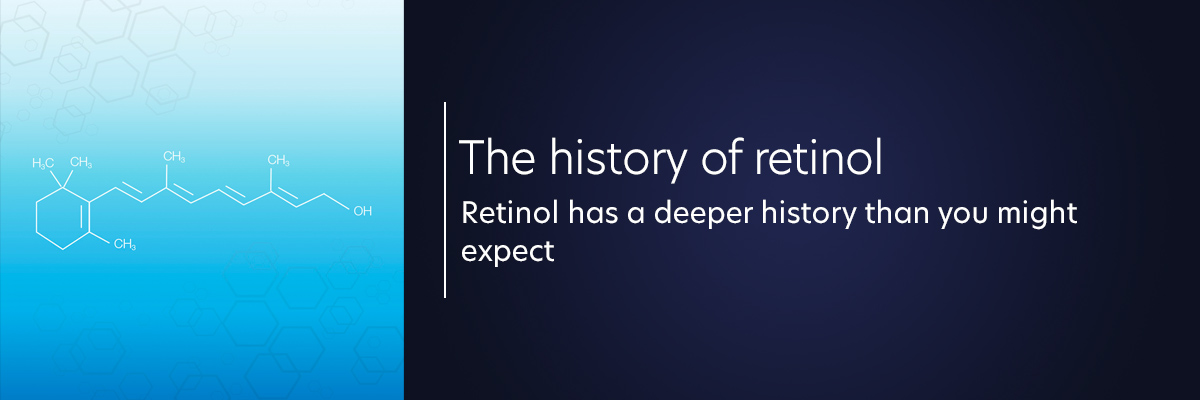
Retinol has been touted as a superhero ingredient for your skin and it’s no wonder why. When used in skincare, retinol promotes healthy cell turnover and collagen production. But how did this staple ingredient come to be?
What is retinol?
Retinol is a member of the vitamin A family called retinoids, which your body requires for healthy vision, bone growth and a strong immune system. Our bodies don’t naturally produce vitamin A, so its important to consume different forms of it to help your body meet its minimum requirements. However, your skin is the last organ to get the vitamins you consume, so relying solely on diet won’t provide many vitamin A benefits to the skin. Topical application is the best way to reap the many anti-aging and healthy skin benefits that vitamin A has to offer.
Discovering retinoids
Vitamin A deficiencies have specifically been linked to blindness, which is how the discovery of retinoids came about. Ancient Egyptian, Ancient Greek and medieval medicine have all shown evidence of using animal liver (where vitamin A is most abundant) to treat night blindness.
Flash forward to 1912. Frederick Gowland Hopkins discovered factors in milk that are neither fats, proteins, nor carbohydrates, which will soon be recognized as vitamin A. In 1943, the first study of using retinoic acid to treat acne was published. By the end of the 1950s, retinoic acid started its use as a dermatological treatment for patients suffering from breakouts. Like many other medical treatments, years of observation presented unexpected benefits from topical retinoid use. In 1983, a study was published asserting the use of retinoic acid to manage skin’s aging.
From retinoic acid to retinol
By the 1990s, retinoic acid started getting a bad reputation for increasing irritation and sensitivity of the skin. This is where retinol comes in. Put simply, retinol is a milder form of retinoid that is converted to retinoic acid in the skin.
The current state of retinol
Today, retinoids are conventionally used in two familiar forms: retinoic acid and retinol. Retinoic acid is available by prescription only and is typically used only to treat acne. Retinol, on the other hand, is mostly used in cosmeceutical products to treat fine lines and wrinkles. However, retinol has shown extraordinary results when fighting acne and discoloration as well. Formulations, concentration of the ingredient and not least delivery systems vary across retinol products, but PCA SKIN® has formulated three individual retinols paired with complementary ingredients to treat three unique skin concerns: acne, discoloration and, of course, aging, with R-OH Retinol Solutions.
